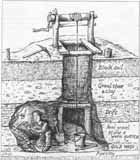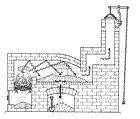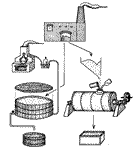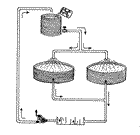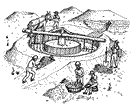Mining technology on the central Victorian goldfields in the 1850s and 1860s
Early techniques
The efforts of the first gold seekers were mainly focused on the shallow alluvial deposits found in central Victoria, particularly in the Bendigo-Ballarat area. Today it’s easy to regard the rolling wave of discovery, and the digging and development that followed, as the gold rush – like one big earthquake. In fact, it was a long series of tremors and aftershocks – more than 200 of them – with more advanced mining techniques and equipment becoming necessary as the easy-pickings dwindled. Some of the rushes to new fields – Heathcote, Alma, Ararat, Dunolly, and Landsborough – were equal to or even greater in size than those at Mount Alexander and Bendigo. Others were much smaller, like the Berlin (or Rheola) rushes of 1868.




